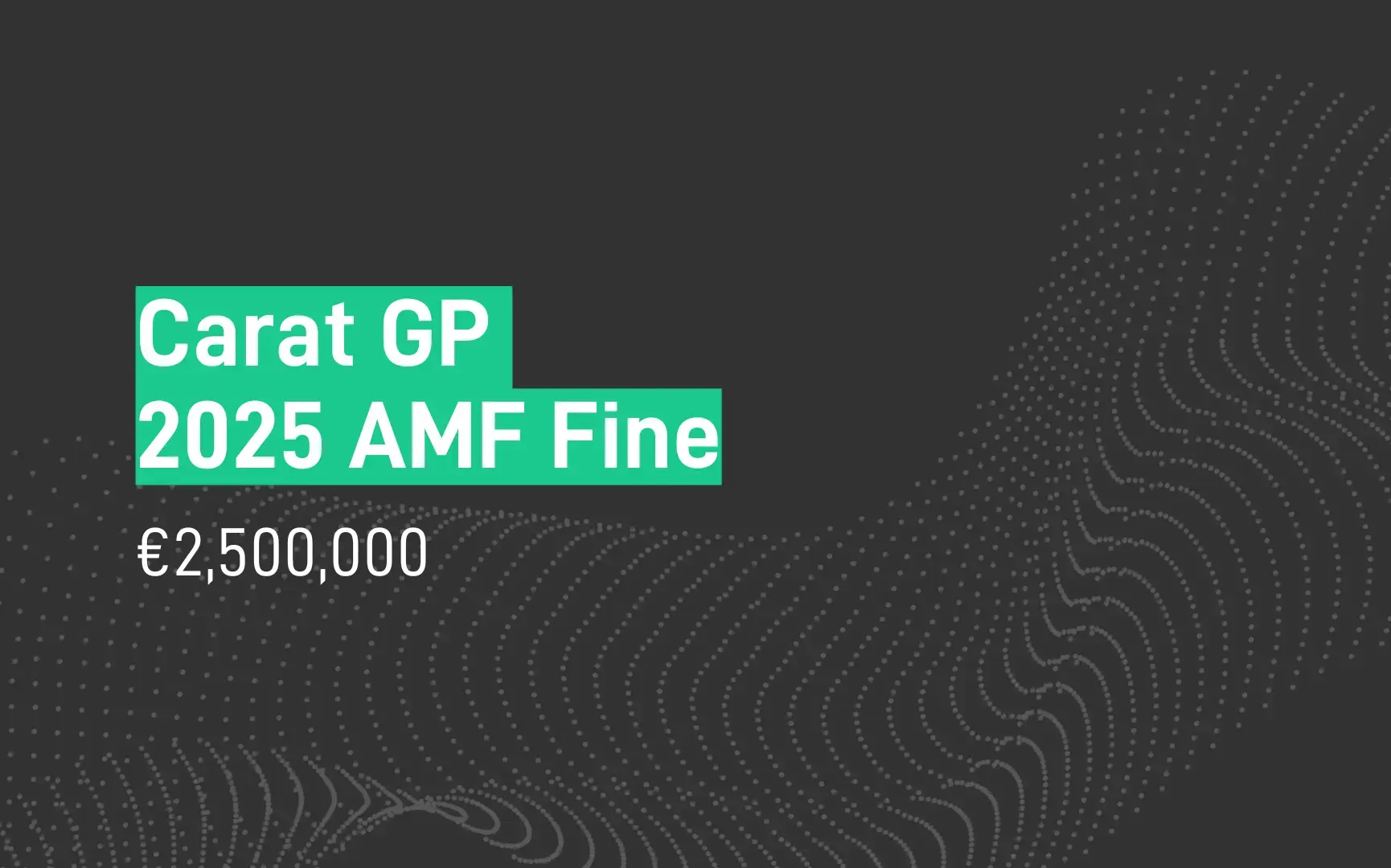Overview
On July 23, 2025, the UK Supreme Court unanimously quashed the convictions of former traders Tom Hayes and Carlo Palombo in a landmark ruling on LIBOR and EURIBOR manipulation cases.
Hayes' 2015 conviction for conspiracy to defraud related to influencing Yen LIBOR submissions at UBS and Citigroup, while Palombo's 2019 conviction involved EURIBOR at Barclays.
Palombo was convicted in 2019 for similar behaviour related to EURIBOR rates whilst at Barclays.
The Supreme Court said the original trials weren't fair because the judges gave the juries bad instructions on the law. This doesn't mean Hayes and Palombo are proven innocent; it just means their convictions can't stand due to these mistakes.
Background on the Case
-
Tom Hayes: Convicted on eight counts of conspiracy to defraud in 2015, sentenced to 14 years (later reduced). Allegations centred on agreements to procure LIBOR submissions that prioritised trading advantages over genuine borrowing rate assessments.
-
Carlo Palombo: Convicted in 2019 on one count related to EURIBOR, receiving a 12-month suspended sentence. Similar claims involved influencing submissions to benefit derivatives positions.
These prosecutions stemmed from post-2008 investigations into benchmark rigging, part of broader actions against 19 individuals. The Supreme Court's ruling does not exonerate the appellants but quashes the convictions due to procedural unfairness, despite acknowledging substantial evidence of attempts to influence rates.
Core Elements of LIBOR and EURIBOR Submissions
LIBOR and EURIBOR served as critical benchmarks for pricing derivatives, swaps, and other instruments tied to inter-bank lending rates. Submissions were not empirical facts derived from actual transactions but subjective judgments: for LIBOR, the rate at which a panel bank "could borrow funds" in reasonable market size by 11:00 a.m. London time; for EURIBOR, the rate at which "one prime bank" would offer funds to another by 11:00 a.m. Brussels time.
These involved selecting from a permissible range based on market data, broker inputs, and internal assessments. The Supreme Court rejected the "cheapest rate" theory advanced in prior appeals, affirming that submissions could legitimately fall within a band of reasonable estimates, provided they reflected the submitter's genuine opinion.
Why the Convictions Were Quashed
"For the reasons given in this judgment, I would answer both limbs of the certified question in the negative, allow both appeals, and quash the appellants'
The judgment, delivered by Lord Leggatt, pinpointed errors in how trial judges directed juries on the "proper basis" for submissions, effectively blurring questions of law (e.g., interpreting benchmark definitions) with questions of fact (e.g., the submitter's state of mind).
The unanimous 5-0 decision stressed that, while evidence suggested intent to influence rates for profit, the verdicts could not be deemed safe absent proper directions. Compliance takeaway: This reinforces the need for clear internal guidance distinguishing between permissible judgment calls and manipulative conduct.
Overreach on Commercial Considerations
"It was wrong for the judge to direct the jury that, if the submitter took any account of the commercial interests of the bank or a trader, the rate submitted was for that reason not a genuine or honest answer to the question posed by the definitions."
Juries were directed that any influence from trading advantages automatically rendered a submission non-genuine or dishonest under the benchmark definitions. The Court clarified this as a misstep; genuineness turns on whether the submitter honestly believed the rate reflected market conditions, not on a strict prohibition derived from construing the definitions as barring all commercial input. This removed from the jury's purview the factual assessment of intent, violating the division of roles in criminal trials.
Conflation of Opinion and Fact
"Whether a submission was genuine or honest did not turn on how a court construes the LIBOR and EURIBOR definitions. It turned on the state of mind of the submitter and whether the stated opinion of the borrowing rate was one which that person actually held. That is a question of fact which, in a criminal trial, is the province of the jury and not the judge."
Benchmark submissions are inherently opinion-based, not verifiable facts. The ruling emphasised that falsity arises only if the submission misrepresents the submitter's true belief (e.g., via implied representation under fraud principles). Trial directions equated commercial influence with falsity as a matter of law, preempting jury deliberation on whether submissions were deliberate misrepresentations.
Influence of Precedent
"The Court of Appeal was wrong to reject on these grounds the previously uncontroversial proposition that a LIBOR or EURIBOR submission typically involved a selection from within a range of borrowing rates. The 'cheapest rate' theory was introduced in the Court of Appeal's judgment in 2024. It had not featured in the litigation until then. It was a blind alley."
The referrals back to the Court of Appeal stemmed from the 2022 US decision in United States v Connolly and Black, which rejected a "one true rate" theory and emphasised subjective belief in LIBOR submissions. The UK's Criminal Cases Review Commission cited this in referring the cases, prompting fresh appeals.
Notably, the Supreme Court critiqued the English appeal system's rigidity: prior Court of Appeal dismissals repeatedly rejected arguments on flawed directions, labelling them "bad" or previously settled, despite evolving legal analysis.
An Exoneration?
"There was ample evidence on which a jury, properly directed, could have found the appellant guilty of conspiracy to defraud. But the jury was not properly directed."
The Supreme Court's role was to review legal errors (e.g., jury misdirections), not retry the facts or reevaluate evidence. The judgment assumes the reader knows the original trials featured such chats (which were indeed pivotal and "damning" in media coverage and the 2015/2019 convictions, with Hayes' Bloomberg messages showing explicit requests like favours for rate tweaks). Additionally, the document repeatedly notes "undisputed" evidence of attempts to influence rates (e.g., paras 12, 97, 161).
"There was copious evidence that the appellants had agreed with others to procure submissions which were not genuine assessments of the bank's borrowing rate but were deliberately distorted in pursuit of financial gain. Much of that evidence came from Mr Hayes himself in the course of many hours of interviews conducted by the SFO under the SOCPA process."
"WE WOULD PREFER IT HIGHER ... WE HAVE ABOUT 15 BB 1MO RECEIVES"
In Hayes' case, the Court noted his admission that he sought to influence rate submissions within a perceived range to benefit his trading positions. The original judge's directions erroneously treated the consideration of trading advantages as automatically rendering submissions non-genuine as a matter of law, thereby removing this factual dispute from the jury's consideration. This misdirection, the Court held, "undermined the fairness of the trial," leading to an unsafe conviction. Similarly, in Palombo's case, while the directions were less severely critiqued, they committed the same core error of conflating questions of fact (such as the submitter's state of mind) with matters of legal interpretation. The outcome was not a declaration of innocence but a determination that these errors materially compromised the verdicts.
CONCLUSION
"The history of these two cases raises concerns about the effectiveness of the criminal appeal system in England and Wales in confronting legal error."
The Supreme Court started its judgment by calling out how hard it was for Hayes and Palombo to get a fair hearing. They tried multiple times to appeal the bad jury instructions, but lower courts brushed them off, even saying the points were "bad" or already decided. It took years and that US ruling to get a real review. This highlights glitches in the UK's criminal appeal system, especially for complex financial cases where legal views evolve over time.
This case shows how a small legal error can undo years of prosecutions. By quashing these convictions, the Supreme Court reinforced that honesty in finance isn't black-and-white; it's about real beliefs, judged fairly by ordinary people on a jury. If you've followed along, you now understand why this matters: it's not just about traders and rates, but about justice working right for everyone.
SOURCES
Discover how SteelEye can help your firm stay ahead of regulatory change, streamline surveillance, and reduce compliance risk.
Book a tailored demonstration today and see the platform in action.

.png)







